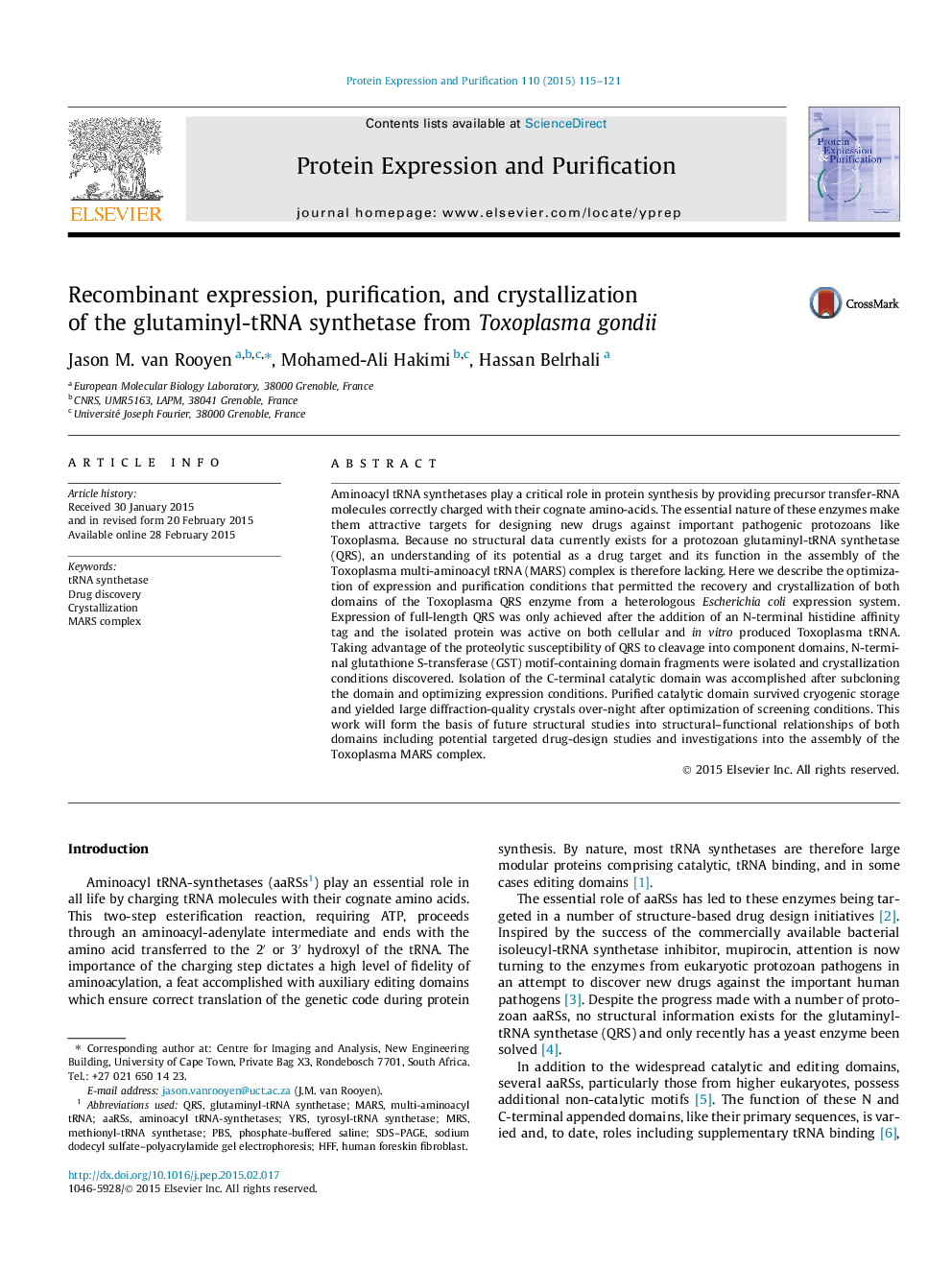| Article ID | Journal | Published Year | Pages | File Type |
|---|---|---|---|---|
| 2020348 | Protein Expression and Purification | 2015 | 7 Pages |
Abstract
Aminoacyl tRNA synthetases play a critical role in protein synthesis by providing precursor transfer-RNA molecules correctly charged with their cognate amino-acids. The essential nature of these enzymes make them attractive targets for designing new drugs against important pathogenic protozoans like Toxoplasma. Because no structural data currently exists for a protozoan glutaminyl-tRNA synthetase (QRS), an understanding of its potential as a drug target and its function in the assembly of the Toxoplasma multi-aminoacyl tRNA (MARS) complex is therefore lacking. Here we describe the optimization of expression and purification conditions that permitted the recovery and crystallization of both domains of the Toxoplasma QRS enzyme from a heterologous Escherichia coli expression system. Expression of full-length QRS was only achieved after the addition of an N-terminal histidine affinity tag and the isolated protein was active on both cellular and in vitro produced Toxoplasma tRNA. Taking advantage of the proteolytic susceptibility of QRS to cleavage into component domains, N-terminal glutathione S-transferase (GST) motif-containing domain fragments were isolated and crystallization conditions discovered. Isolation of the C-terminal catalytic domain was accomplished after subcloning the domain and optimizing expression conditions. Purified catalytic domain survived cryogenic storage and yielded large diffraction-quality crystals over-night after optimization of screening conditions. This work will form the basis of future structural studies into structural-functional relationships of both domains including potential targeted drug-design studies and investigations into the assembly of the Toxoplasma MARS complex.
Related Topics
Life Sciences
Biochemistry, Genetics and Molecular Biology
Biochemistry
Authors
Jason M. van Rooyen, Mohamed-Ali Hakimi, Hassan Belrhali,
